Despite manifold issues like supply chain bottlenecks and poor planning that currently plague the auto industry, new models are being released continually. The big challenge facing the automakers is to supply enough of the models that buyers want in a timely fashion. Following are descriptions of a few vehicles that will hit showrooms in the next six months.
2025 Kia K4
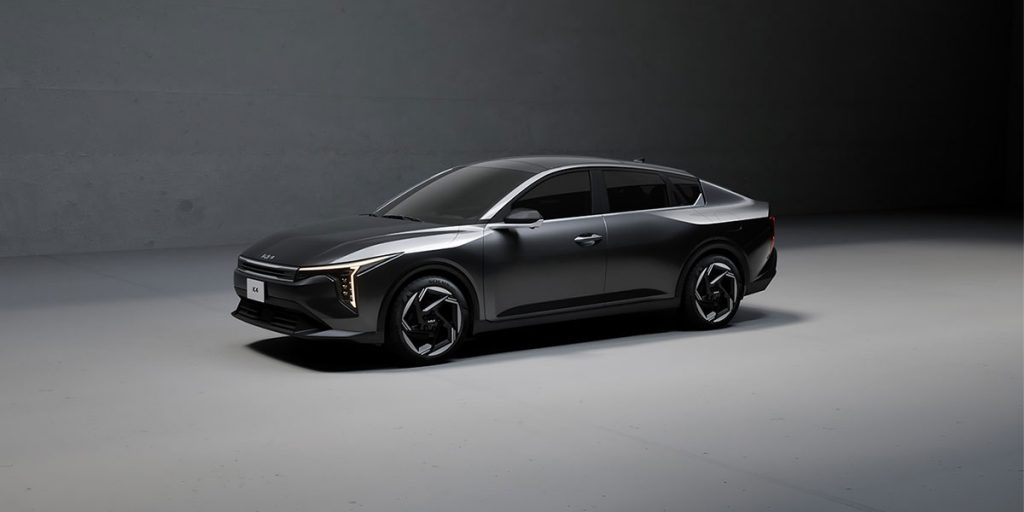
Photo from Kia Canada
The K4 replaces the popular Forte compact car in Kia’s lineup. Built on the same platform as the current Hyundai Elantra, the K4 is longer and wider than the Forte. According to Kia Canada, the platform is shared with the Niro.
Like most other Kias, the new K4 is very attractive. The clean and unadorned lines offer a compelling visual tension, and the few applied trim pieces are attractive. Only a sedan was shown at the New York show in April, but a hatchback may become available later.
Inside, the driver faces a wide computer tablet that is connected to a chunky, rectilinear dashboard. Many routine functions are handled by the screen but fortunately a few physical buttons remain. The rest of the cabin looks very chic – a Kia hallmark.
Two familiar Kia engines return, a 2L four rated at 147 horsepower, and a 1.6L turbo four, with an estimated output of around 200 horsepower. The sole transmission offered is a CVT. Though many rivals in the compact car segment now offer optional all-wheel drive, it has not been announced for the new K4.
The K4 should reach Canadian dealerships this fall.
2025 Nissan Kicks
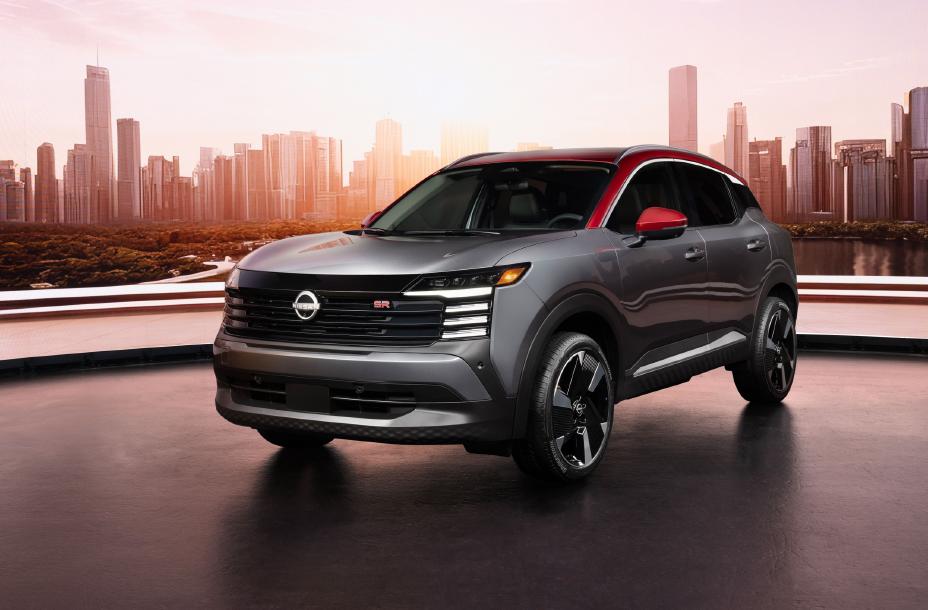
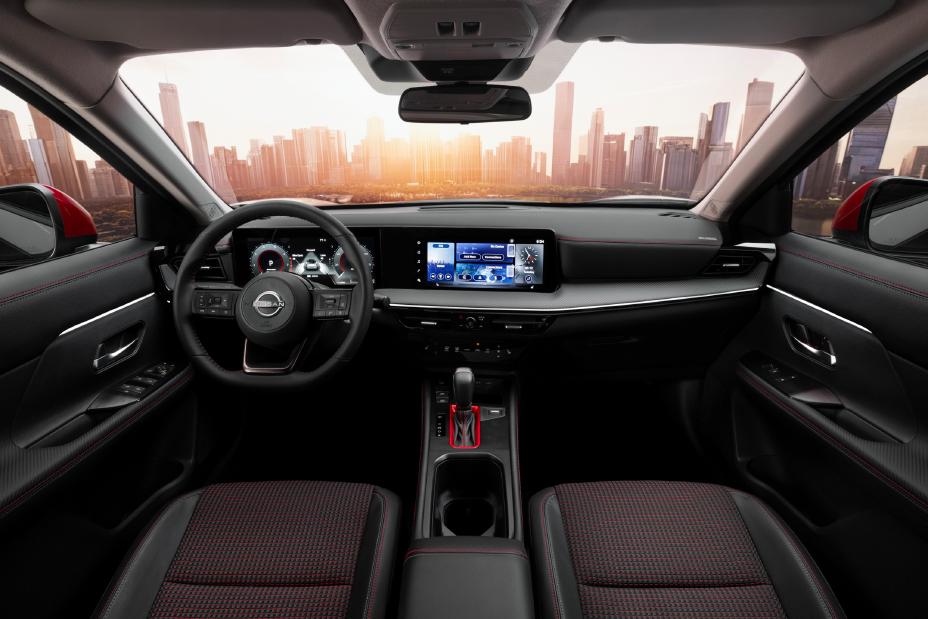
Photos from Nissan Canada
After a long seven-year run, Nissan has renewed the compact Kicks crossover. Nissan rectified a perceived shortcoming of the previous model by adding all-wheel drive for 2025 – a first for the Kicks. Nissan elected not to renew the Qashqai in North America, so the new Kicks replaces that vehicle as well. Compared to the original Kicks, the new model is 57 mm longer.
The styling reflects a new design vocabulary from Nissan. The so-called “V-Motion” grille, long a Nissan design flourish, has been replaced by a very tall, horizontal grille flanked by the type of multi-segment lighting first seen on the current Hyundai Tucson. The flanks are clean and a new look for Nissan. The rear styling is clean but the tailgate window looks small. The driver faces a now ubiquitous wide computer tablet, with vehicle information facing the driver and infotainment over the dash centre stack. The dash itself is nicely shaped, as is the rest of the cabin. With large cupholders in the centre console and large door bins, cabin oddments storage is good. The previous Kicks made a good use of interior space; with a 37 mm longer wheelbase, the new model promises to be roomy for its size. Cargo capacity is said to have been increased, and looks deep below the window line.
Engine size increases from 1.6L to 2L, with horsepower now 141, up from 122. The sole transmission on offer is a CVT. The previous beam rear axle has been replaced by a multi-link setup.
Nissan has been progressive regarding active safety equipment. No details are available at this time, but autonomous emergency braking and active cruise control are expected to be standard. Blind spot and rear cross traffic monitors will likely be optional.
Although it has grown, the Kicks remains one of only a few small vehicles still offered in the Canadian market, and Nissan should be lauded for continuing to offer very affordable entry-level models. It’s unfortunate that the durability of many Nissan models has been subpar. The second-generation Kicks should be available by late 2024.
2025 MINI Cooper
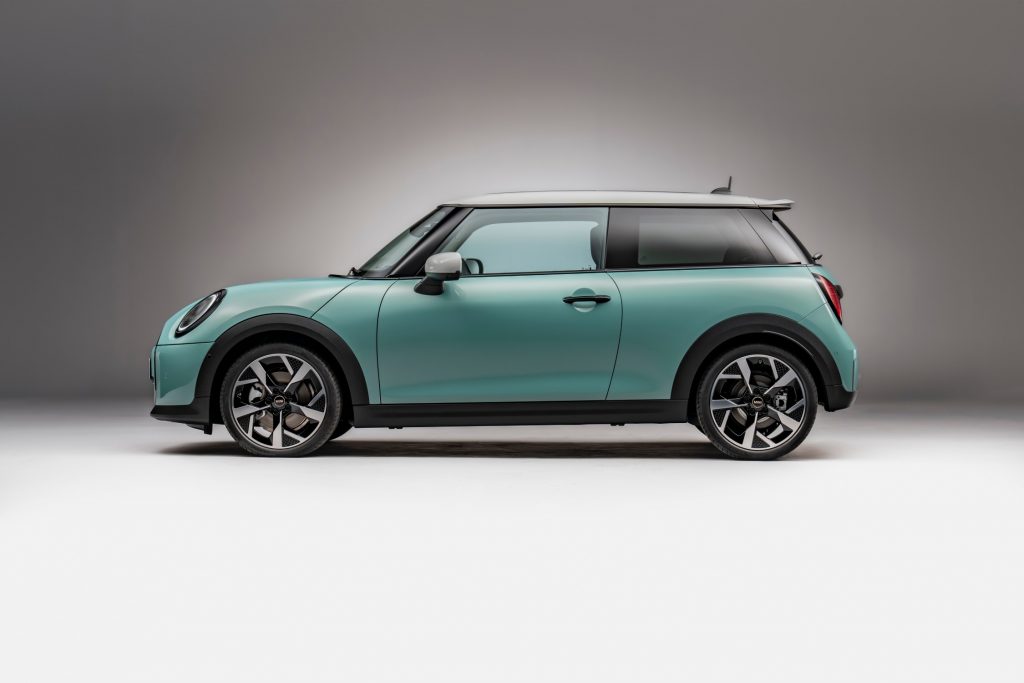
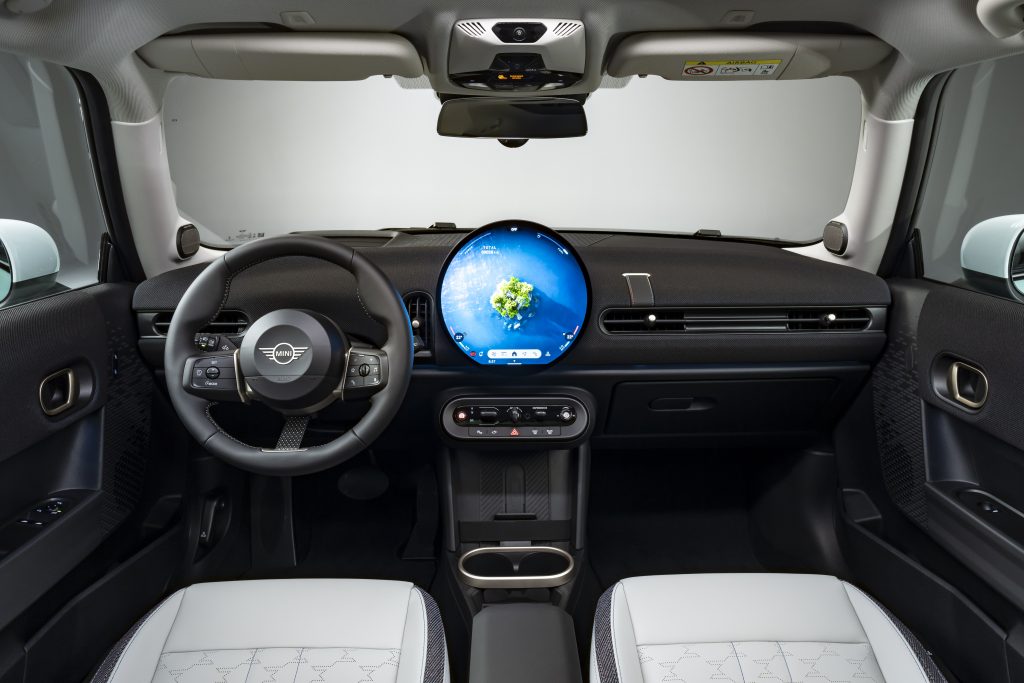
Photos from BMW Canada
After 10 long years in its current form, MINI elected to release a significantly updated model for 2025, rather than a new one. The front end of the car is comprehensively revised, as is the rear, which echoes some of the styling themes explored by Fiat. Only the three-door has been unveiled, and it is unclear if the five-door model will return.
The cabin is completely new and fresh. The dashboard has a low profile and is covered in cloth. There is no gauge package facing the driver, with all of the action centred on a large, Frisbee-like, free-standing screen; in photos it appears to have outstanding visual clarity. A vestigial consolette is attached to the dash beneath the screen and has a few buttons on it for starting and to trigger some screen functions. The rest of the cabin design is Zen in a style that is spare but far from plain. Cabin materials look premium, which is fitting for what has become an expensive car. Interior space is similar to the outgoing 2024 model. Space is generous up front but rear seat legroom and cargo space are tight.
Though it’s still offered in the U.S., MINI Canada has abandoned the base 1.5L turbo three cylinder for the updated car, leaving only the premium 2L turbo four S model rated at 201 horsepower. Power will reach the front wheels via a seven-speed dual-clutch automated manual transmission. A six-speed manual transmission was available on the 2024 model, one of a very few cars to still offer a manual; it may return for 2025.
Complete pricing information was not available as of spring 2024, but MINI has announced a starting price just under $40,000. MINIs have always been expensive, and options are many and pricey. The higher base price of the updated 2025 model moves it firmly into the luxury class and will further narrow its appeal to a niche market. The decision to just update what was already an old car instead of investing in a new once may signal the eventual eclipse of the brand.
2025 Toyota 4Runner
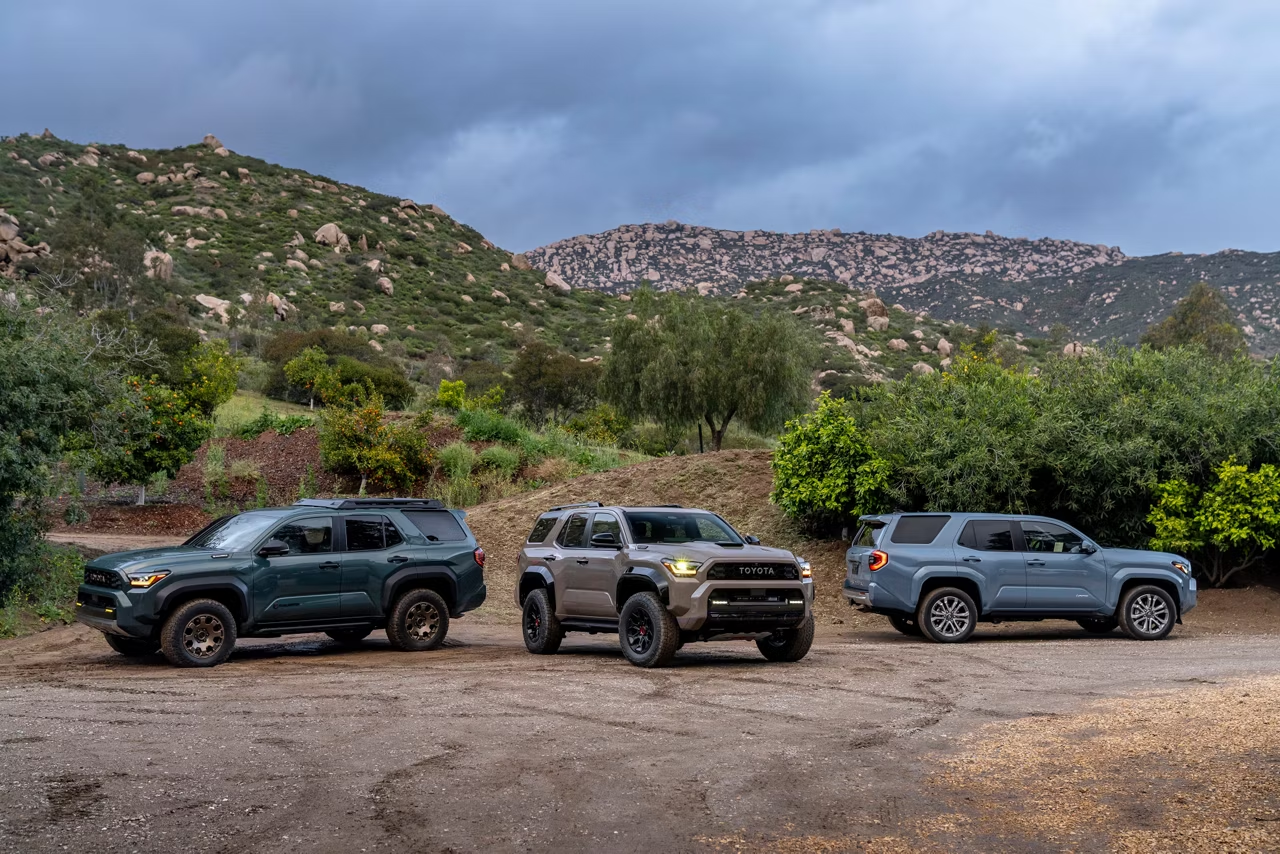
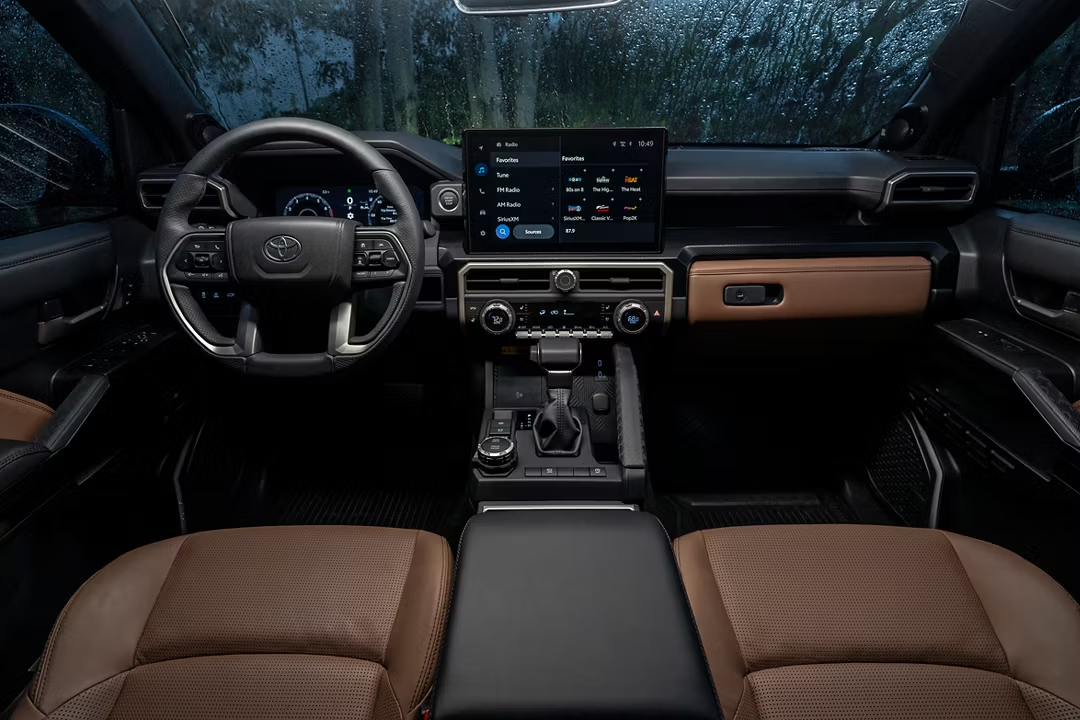
Photos from Toyota Canada
After many, many years, Toyota has finally issued a new 4Runner. Previously built on the premium architecture that underpinned the very pricey Land Cruiser, the new truck is closely linked to the more mainstream Tacoma pickup.
The new 4Runner is built on a 61 mm longer wheelbase, is 31 mm longer overall and 50 mm wider than its predecessor. The strong and durable 4L-V6 found under the hood of the previous 4Runner has been replaced by two versions of Toyota’s new 2.4L turbo four. The conventional variant is rated at 278 horsepower, with the hybrid putting out 326 total system horsepower. The conventional model sends power to the wheels via an eight-speed automatic. The hybrid model packages its electric motor in with an eight-speed automatic. All-wheel drive is offered in two forms. One has to be actively engaged, the other employs full-time all-wheel drive. The new 4Runner retains an old-school pickup truck live axle in the rear. The anti-roll bars can be disconnected from the driver’s seat to improve off-road suspension articulation. The 4Runner is equipped with a two-speed transfer case with high and low ranges. The various TRD and the Trailhunter trims also feature a locking rear differential. Mud, Dirt, Sand and Crawl modes can be selected, with the Crawl mode acting like an off-road cruise control.
Unlike its clean-lined predecessor and the chic and visually-restrained new Land Cruiser, the 4Runner is, to be charitable, visually challenging. The front end is multi-segmented and the various components do not co-exist harmoniously. The deeply-incised lines on its flanks are a testament to the precision of Toyota’s body panel presses, but they’re unattractive. That said, Toyota likely tested the new look with focus groups and has determined it will appeal to its intended customers.
The 4Runner retains a traditional feature, a tailgate window that can be retracted into the tailgate, like on a 1960s station wagon. The interior is trucklike, with the large, blocky shapes that are so attractive to buyers in this segment. There is a massive, free-standing infotainment screen at the top centre of the dashboard, with plenty of physical buttons and knobs to access most functions. Cabin space should be more than adequate and cargo space looks good.
The new, less-expensive Land Cruiser might have heralded the demise of the 4Runner, as they essentially share a similar space in the market. However, the 4Runner name has so much cachet that Toyota elected to continue the nameplate. Time will tell if the Land Cruiser and 4Runner both manage to sell well, or if one cannibalizes sales of the other.
The new 4Runner should be on sale by the end of 2024.
2025 Mazda CX70
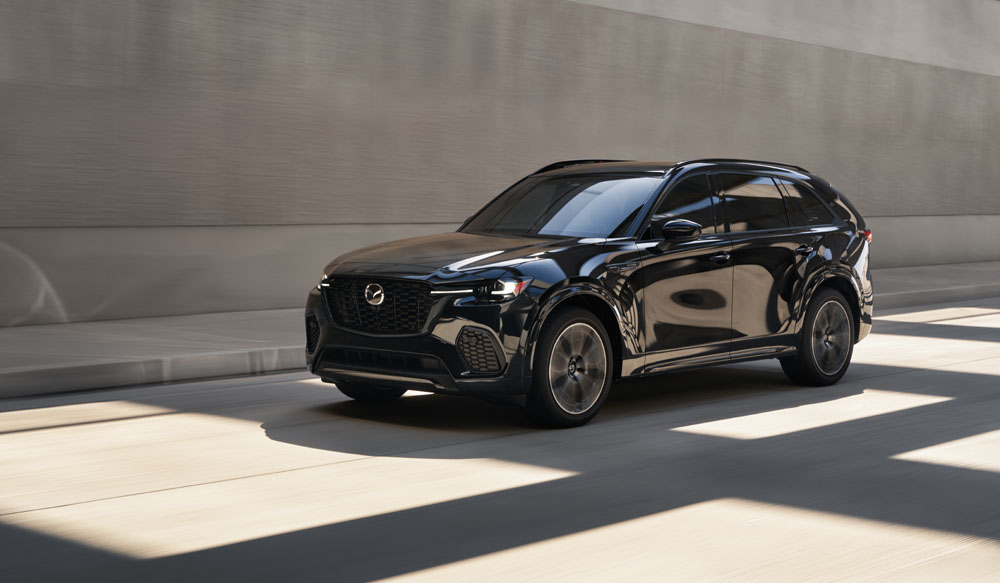
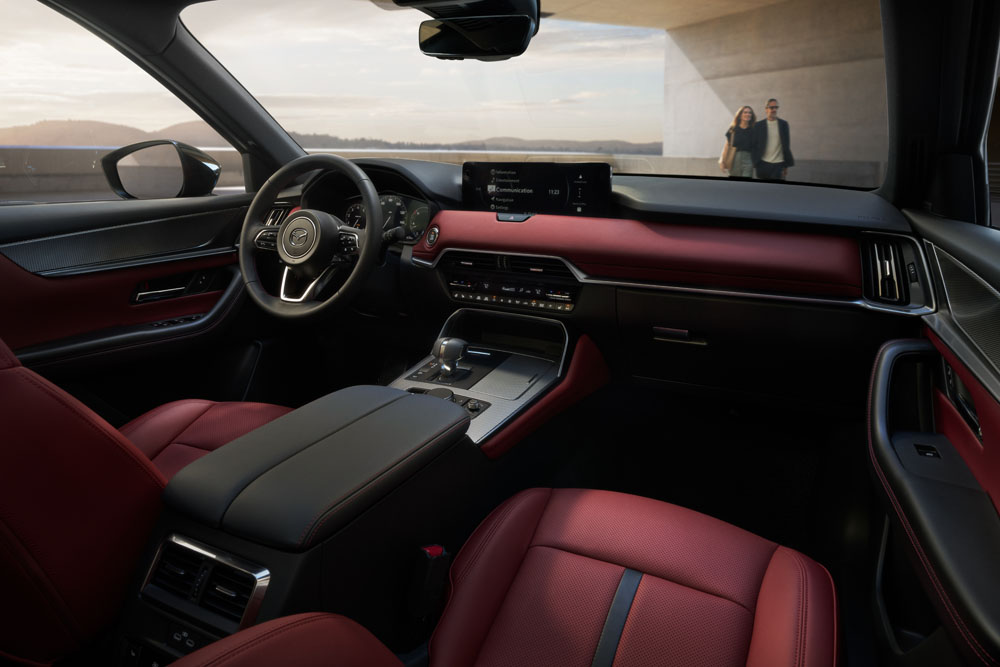
Photos from Mazda Canada
The CX-70 is essentially a shorter variant of the three-row CX-90. The success of vehicles like the Chevrolet Blazer, Ford Edge and Volkswagen Atlas Cross Sport, has demonstrated that there is a market for two-row variants of three-row vehicles which are a bit bigger than compact, two-row crossovers, like the Mazda CX-5.
Like the CX-90 and other current Mazda’s, the CX-70 is a paragon of restrained elegance, with spare, pared-back lines that impart a feel of visual tension. What ornamentation exists is jewel-like and artistically rendered.
The CX-70 shares its cabin with that of the CX-90, and as such is a clean and chic design, especially on higher trim models. Base trims can appear a bit stark as there are a lot of hard plastic surfaces for what, even in base form, is an expensive vehicle. Built on the same wheelbase as the CX-90, the CX-70’s rear seat legroom should be the same but there is no third-row seat and cargo bed length will be less.
The CX-90’s powertrain choices are carried over to the CX-70. A mild hybrid, 48-volt model, hooked up to a 3.3L inline turbo six, puts out 280 horsepower in lower trims and 340 horsepower in premium models. Buyers can also choose a PHEV model that combines a normally-aspirated 2.5L four and an electric motor to create 323 total system horsepower. The PHEV model can travel up to 42 kilometers in full electric power under ideal conditions.
The CX-70 can be ordered now, with deliveries commencing this summer.
